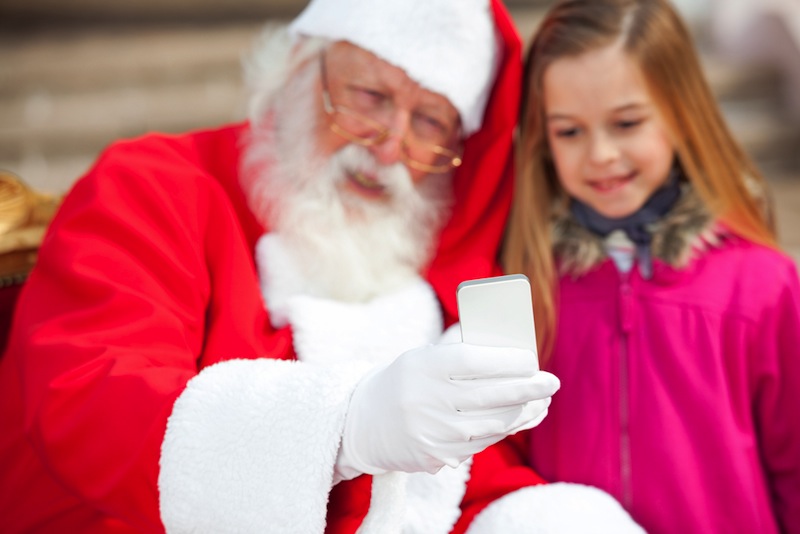
High-Tech Santa: 5 Devices to Give Old St. Nick a Boost

Every year, the North American Aerospace Defense Command (NORAD) tracks Santa Claus' location on Christmas Eve, to the delight of millions who visit the military's website that night.
If a high-tech military operation can track Santa, couldn't technology also give the jolly old elf a hand in finishing his rounds? After all, Santa isn't getting any younger, and Christmas Eve isn't getting any longer.
So what should be on Santa's wish list this year to help him guide his sleigh from the North Pole and get presents to all the good girls and boys of the world? Here are a few suggestions. (Note: LiveScience is not being paid to promote these products. We're simply concerned for Santa's well-being.)
1. A 3D printer
Manufacturing is a tough business, what with outsourcing, supply problems and the cost of labor. Perhaps Santa's elves could stay competitive if they caught up with the 3D-printing craze. Desktop 3D printers for home use are just coming on the market, and they're capable of turning digital instructions into 3D gizmos. Santa and his elves could even move beyond plastic as a material with a new, open-source 3D metal printer that costs less than $1,200, compared with $500,000 for a commercial device. [The 10 Weirdest Things Created By 3D Printing]
2. An updated naughty/nice list.
Parchment and paper are so 20th century. Santa needs something a bit snazzier — perhaps a tablet? LAPTOP magazine's Avram Piltch suggests Samsung's Galaxy Note 10.1. It comes with a pen and note-taking applications, so Santa won't have to take off his gloves to swipe at the screen (nor will he have to worry about tablet typing with chubby fingers). The tablet allows users to open two apps at once, so Santa can keep his naughty/nice list open while consulting Google Maps for directions to his next stop.
Get the world’s most fascinating discoveries delivered straight to your inbox.
3. High-tech gloves
Santa's white gloves provide a nice contrast to his bright-red suit, but they won't do for the tablet era. Who wants to have to take off their gloves to use a touch screen or open an app? Dutch designer label Mujjo sells a line of touch-screen gloves that register on smartphones and tablet screens just fine. There's even a double-layered gloves for chilly climates like the North Pole, and the gloves are super-stretchy, so the aforementioned chubby fingers shouldn't be an issue. These gloves would ensure that if Santa were to drop his stylus from the sleigh midair, he'd still be able to access his list and directions.
4. GPS capabilities
Rudolph, with his nose so bright, may do just fine at keeping Santa's sleigh on course. But a little backup couldn't hurt. Santa needs to take advantage of the global positioning system (GPS).
GPS has been around since 1995 and is now so ubiquitous in phones and cars as to be taken for granted. Originally a military project, GPS uses satellites positioned in orbit that transmit periodic messages with the time and their location to Earth. GPS receivers on the planet's surface capture and triangulate these space-based messages in order to pinpoint location.
An emerging line of GPS trackers can even help Mrs. Claus keep an eye on her husband. These devices can show where someone is and where they've been — Perfect for Christmas Command Headquarters.
5. Protective gear
One disadvantage to entering the digital age is that most tech gadgets aren't built for the cold. Apple recommends operating its devices only between 32 degrees and 95 degrees Fahrenheit (0 degrees and 35 degrees Celsius).
What's an Arctic-based elf to do? A Kickstarter-funded company has a possible answer. Salt Cases uses NASA-developed materials that protect spacecraft from the chill of space and the heat of a launch to keep smartphones, laptops and tablets cozy. The thermal layers in the cases refract heat away when it's hot and reflect warmth into the device when it's cold. The company even offers appropriately Christmasy red cases.
Follow Stephanie Pappas on Twitter and Google+. Follow us @livescience, Facebook & Google+. Original article on LiveScience.

Stephanie Pappas is a contributing writer for Live Science, covering topics ranging from geoscience to archaeology to the human brain and behavior. She was previously a senior writer for Live Science but is now a freelancer based in Denver, Colorado, and regularly contributes to Scientific American and The Monitor, the monthly magazine of the American Psychological Association. Stephanie received a bachelor's degree in psychology from the University of South Carolina and a graduate certificate in science communication from the University of California, Santa Cruz.
 Live Science Plus
Live Science Plus





